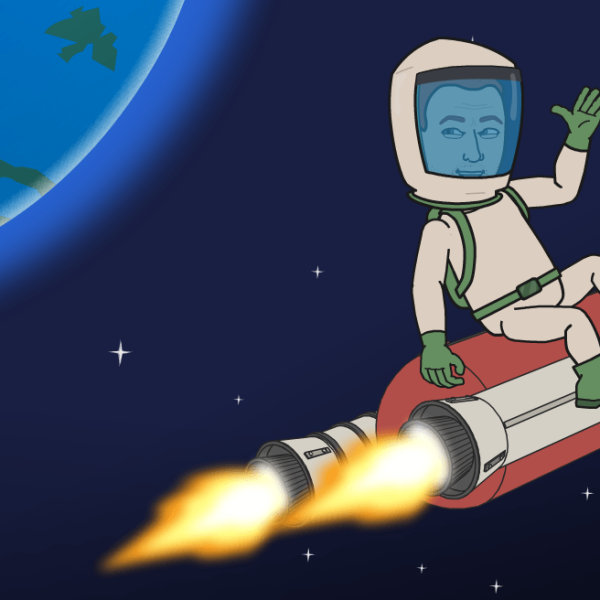
Thirty years ago, on Aug. 25, 1989, NASA’s Voyager 2 spacecraft made a close flyby of Neptune, giving humanity its first close-up of our solar system’s eighth planet. Marking the end of the Voyager mission’s Grand Tour of the solar system’s four giant planets — Jupiter, Saturn, Uranus and Neptune — that first was also a last: No other spacecraft has visited Neptune since.
“The Voyager planetary program really was an opportunity to show the public what science is all about,” said Ed Stone, a professor of physics at Caltech and Voyager’s project scientist since 1975. “Every day we learned something new.”
Wrapped in teal- and cobalt-colored bands of clouds, the planet that Voyager 2 revealed looked like a blue-hued sibling to Jupiter and Saturn, the blue indicating the presence of methane. A massive, slate-colored storm was dubbed the “Great Dark Spot,” similar to Jupiter’s Great Red Spot. Six new moons and four rings were discovered.
During the encounter, the engineering team carefully changed the probe’s direction and speed so that it could do a close flyby of the planet’s largest moon, Triton. The flyby showed evidence of geologically young surfaces and active geysers spewing material skyward. This indicated that Triton was not simply a solid ball of ice, even though it had the lowest surface temperature of any natural body observed by Voyager: minus 391 degrees Fahrenheit (minus 235 degrees Celsius).

The conclusion of the Neptune flyby marked the beginning of the Voyager Interstellar Mission, which continues today, 42 years after launch. Voyager 2 and its twin, Voyager 1 (which had also flown by Jupiter and Saturn), continue to send back dispatches from the outer reaches of our solar system. At the time of the Neptune encounter, Voyager 2 was about 2.9 billion miles (4.7 billion kilometers) from Earth; today it is 11 billion miles (18 billion kilometers) from us. The faster-moving Voyager 1 is 13 billion miles (21 billion kilometers) from Earth.
Getting There
By the time Voyager 2 reached Neptune, the Voyager mission team had completed five planetary encounters. But the big blue planet still posed unique challenges.
About 30 times farther from the Sun than Earth is, the icy giant receives only about 0.001 times the amount of sunlight that Earth does. In such low light, Voyager 2’s camera required longer exposures to get quality images. But because the spacecraft would reach a maximum speed of about 60,000 mph (90,000 kph) relative to Earth, a long exposure time would make the image blurry. (Imagine trying to take a picture of a roadside sign from the window of a speeding car.)
Read the rest of the Article Here:
30 Years Ago: Voyager 2’s Historic Neptune Flyby
No ownership claimed on images or material – Credit NASA
Simon’s Space

My Recent Posts:
I’m going to be selling my photo’s
Heull there bloggies, I hope you’re good because I have some exciting news. I have signed up with Picfair to have a stab at selling my pictures. As many of my followers old and new have witnessed I like taking…
Keep readingThinking about it makes it Hurt – My Souper Experience
I’m sorry, it’s me – I can’t help it. I’ve tried to keep the insanity from the door of this corner of the web but I can’t do it any longer. The world in which we live is wonderful, beautiful…
Keep readingBlog Orbit – April 2024
Hello there bloggies! I can’t believe it’s April the 5th already and that means I’m technically late coming to you with the April Blog Orbit. I’m not counting though if you’re not and to be honest that kind of where…
Keep reading



From the things I read, I get the sense that NASA is really itching to get back to Neptune. We’ve discovered so many Neptune-like exoplanets out there. It would be really helpful if we understood Neptune better.
LikeLiked by 1 person
I would love them to get back out there.
LikeLiked by 1 person
Good post Simon.
A timely reminder of our achievements and the wonders they uncover for us.
LikeLiked by 1 person
This was ground breaking at the time and still is now.
LikeLiked by 1 person
And we’ve only started to begin 😃
LikeLiked by 1 person
Exactly, there’s so much further to go.
LikeLiked by 1 person
If we don’t kill ourselves off, we’ll likely to be saying the say thing in a One Hundred Thousand Years time.
LikeLiked by 1 person
Exactly and we won’t be wrong becasue the goal posts will have changed.
LikeLiked by 1 person
Isn’t it a wonderful thought 🤗
LikeLiked by 1 person
It is indeed. 🙂
LikeLiked by 1 person
30 years already… Man, time flies.
LikeLiked by 1 person
I know – I was young back then.
LikeLiked by 1 person